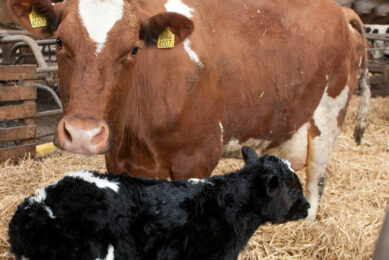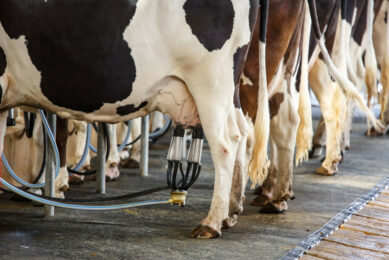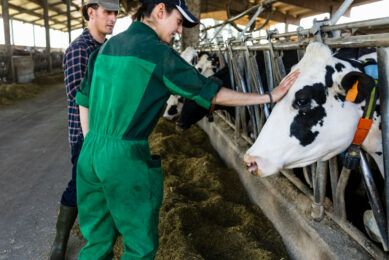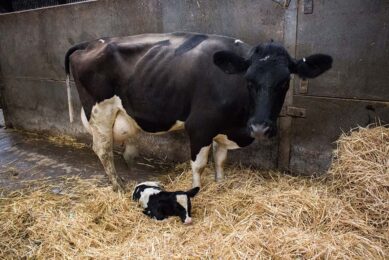Late gestation hoof trimming increases abortion risk
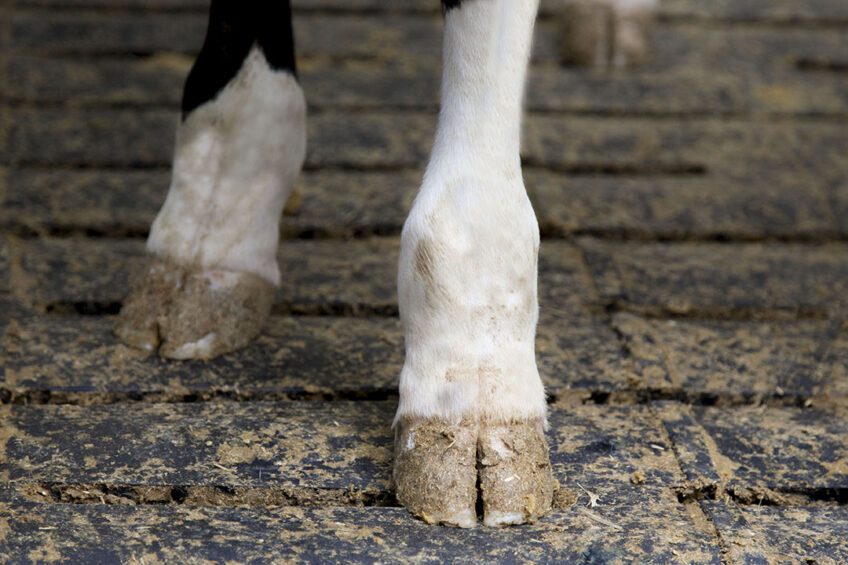
A study has shown that hoof trimming during the late gestation period, ups the chances of abortion in dairy cows.
Research at Aarhus University, Denmark has shown that hoof trimming around drying off results in a lower occurrence of sole ulcers in the following lactation.
“Having said that, it is also important to keep in mind that hoof trimming can be stressful for the cow. When a cow is placed in a hoof-trimming chute, she is suspended with straps under her thorax and abdomen. This may cause pressure on the cow’s internal organs, including the uterus. The combination of stress and external pressure on the uterus may increase the risk of abortion in cows trimmed in late gestation,” says senior scientist Peter T. Thomsen from Department of Animal Science, Aarhus University.

Therefore, he and his colleagues from AU and University of Copenhagen have conducted a large-scale study evaluating whether hoof trimming late in gestation is a risk factor in relation to abortion in dairy cows.
The study
In the study, the researchers have retrieved registrations from the Danish Cattle Database on all pregnant cows from 2012 to 2018. Information included e.g. the outcome of the pregnancies: abortion or calving (with a live or stillborn calf).
Cows trimmed during the last four weeks before end of gestation had a 2.4 times higher odds of abortion.
A vast amount of information is available from the database, as Danish dairy farmers are obliged to report the outcome of pregnancies electronically to the Danish Cattle Database. Additionally, more than half of all dairy herds report registrations of hoof trimmings for each cow electronically to the Danish Cattle Database.
The study included 1,476,013 pregnancies, during which the cow had been trimmed at least once during gestation.
Lameness: A look at fertility, milk production and control
Bovine lameness in cattle is one of the key endemic diseases causing health and welfare problems and production losses. Quantification of the impact of the disease is, therefore, vital to highlight its importance to industry and to determine the relative cost benefits of control intervention. Find out more…
Increased the odds of abortion
The results showed that 1.24% of all pregnancies resulted in an abortion during the last third of gestation. Twin pregnancies had higher odds of abortion compared to pregnancies with only one calf. In addition, Jersey cows had significantly lower odds of abortion than other breeds. Approximately 29% of all cows included in the study had been trimmed within the last 8 weeks before calving or abortion.
Finally, the analyses showed that the odds of abortion were significantly higher in cows trimmed late in gestation. “Cows trimmed during the last 4 weeks before end of gestation had 2.4 times higher odds of abortion compared to cows that were trimmed more than 8 weeks before end of gestation,” says Thomsen.
 Expert Opinion: Cow lameness and hoof care: New ideas and changes explored
Expert Opinion: Cow lameness and hoof care: New ideas and changes explored
Sara Pedersen, RCVS Specialist in Cattle Health and Production takes a deeper look.
Even though the study design does not make it possible to conclude that hoof trimming is the direct cause of these abortions, Peter T. Thomsen states, based on the large and comprehensive data material, that there is reason to be extra careful when trimming cows late in gestation. Therefore, farmers and hoof trimmers are encouraged to keep this in mind and thoroughly consider pros and cons before deciding whether a cow late in gestation needs to be trimmed.
“Of course, situations exist where it is necessary to trim a cow late in gestation. In these situations, the cow should be handled as gently as possible, and we recommend that you only lift one leg at a time, in order to limit the physical pressure on the uterus during trimming,” says Thomsen.
Source and for more info: Aarhus University
Author:
Linda Søndergaard Sørensen, Aarhus University



